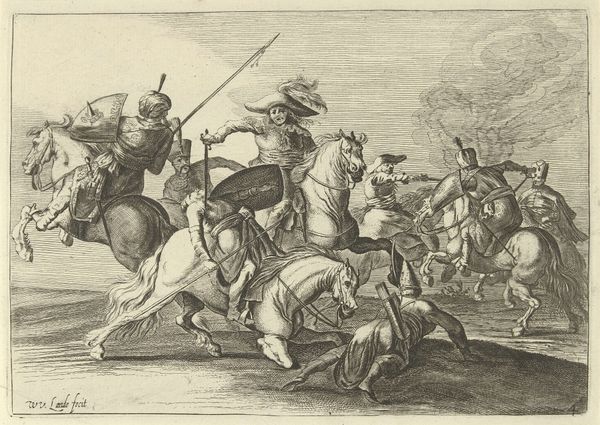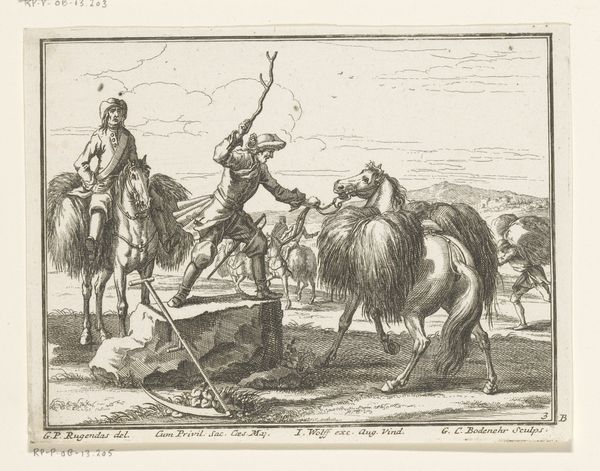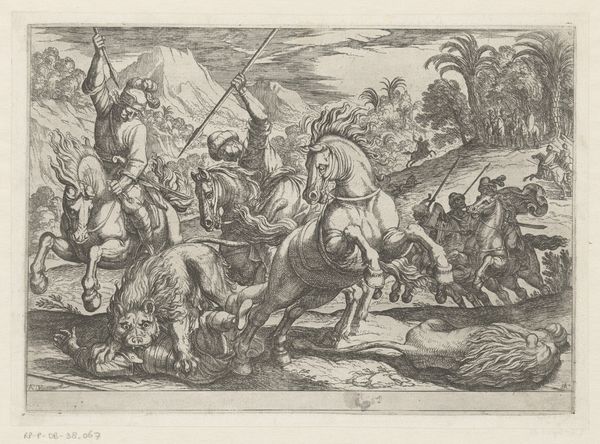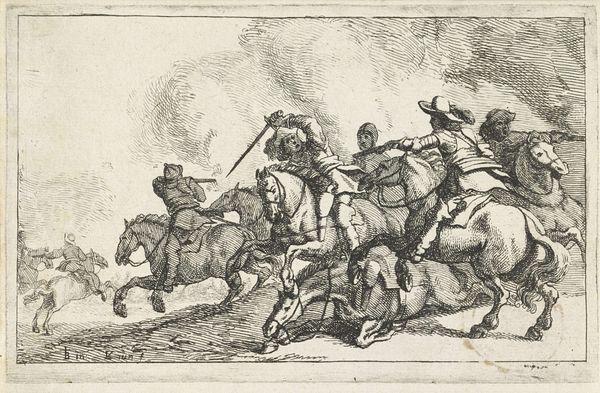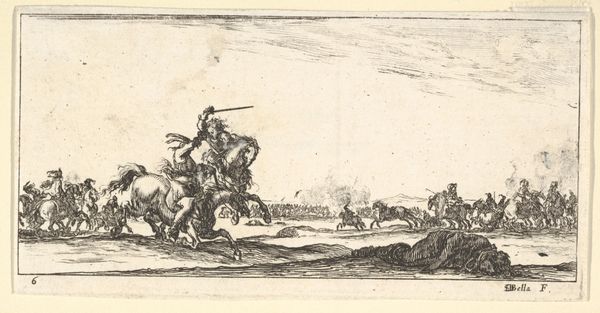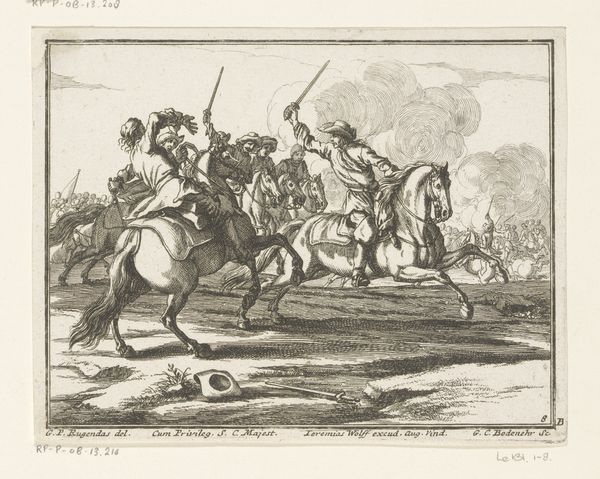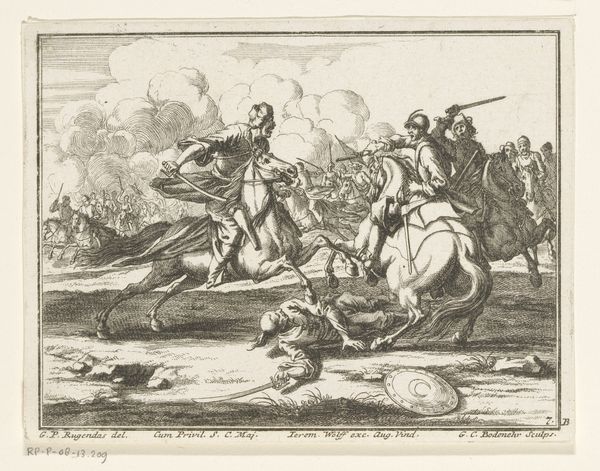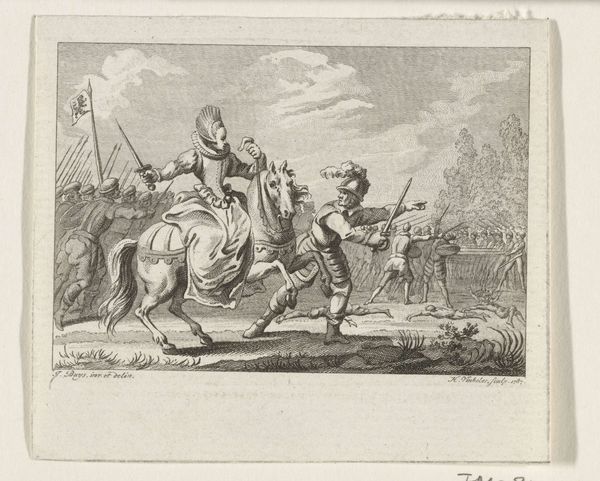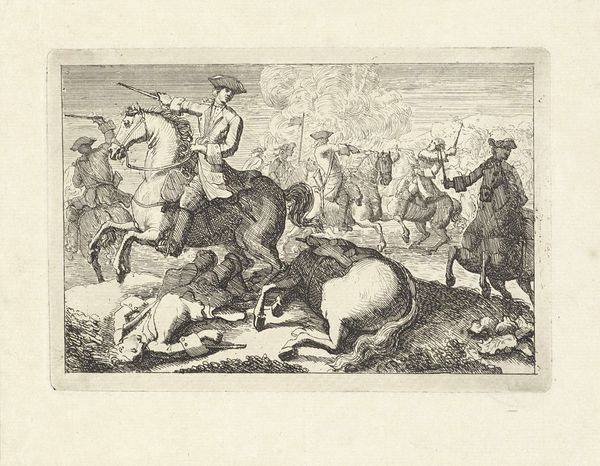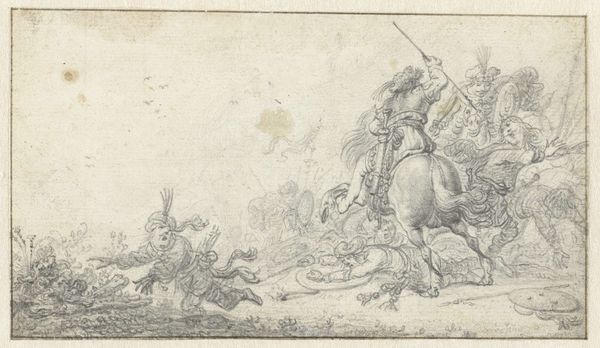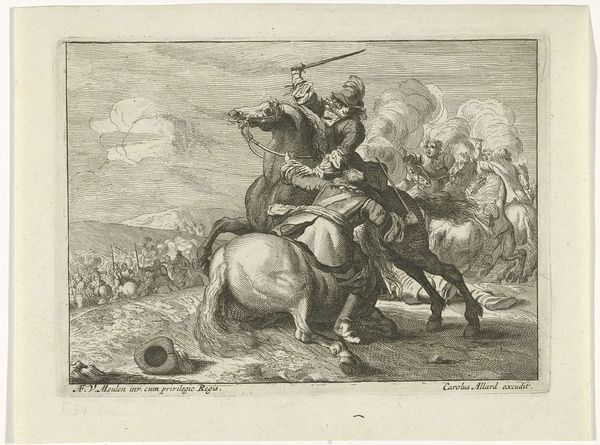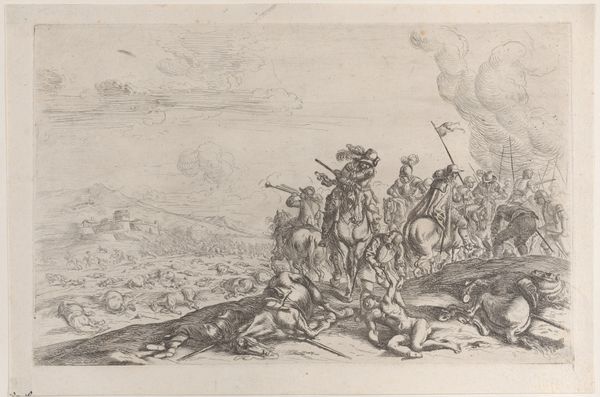
print, etching
#
baroque
# print
#
etching
#
landscape
#
caricature
#
figuration
#
history-painting
Dimensions: height 123 mm, width 160 mm
Copyright: Rijks Museum: Open Domain
Editor: This etching, titled "Ruitergevecht," by Georg Conrad Bodenehr, made sometime between 1686 and 1710, depicts a chaotic battle scene. The sheer density of the lines creates a feeling of intense energy and almost obscures the figures themselves. What aspects of the composition stand out to you? Curator: Initially, I’m drawn to the spatial relationships. Notice how Bodenehr has used the graphic quality of the etching to create depth and recession. The foreground is tightly rendered, almost claustrophobic, while the background dissolves into a haze of repeated strokes. Editor: Yes, it almost feels like the etching blurs into nothing. So the relationship between foreground and background is significant? Curator: Precisely. It's a strategic play with focus. Bodenehr forces our attention onto the immediate conflict through crisp, definitive lines. Then, as our gaze drifts backward, the lines become fainter, suggesting infinite extension, further emphasized by the stark tonal contrast. Are you seeing this compositional element emerge? Editor: I do now. The dramatic clash in the front, almost like a stage, contrasting the rest. But I wonder, are we meant to see beauty or horror in this intense combat through line, shape and form alone? Curator: I think Bodenehr is less concerned with emotive response and more focused on formal representation. The subject, conflict, is almost secondary to how it's structurally presented within the frame. Ask yourself, what shapes repeat themselves? Where does your eye travel in this composition? These clues begin to lead to its intended formal qualities. Editor: Okay, so it's less about the "what" and more about the "how." Focusing on the formal language and considering repetition helps unlock how its viewing is oriented through this use of etching technique. Thank you, I’m appreciating it more now!
Comments
No comments
Be the first to comment and join the conversation on the ultimate creative platform.
